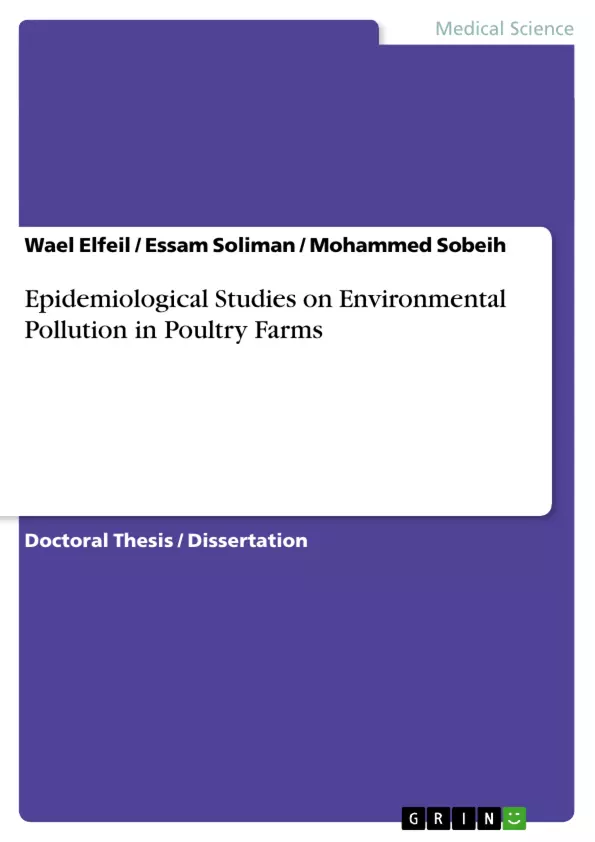Poultry provide globally important sources of animal protein and are amongst the most intensively reared of all livestock species. Diseases of poultry are therefore of major concern, both locally and on an international scale. Poultry production have been brought to the edge, because of the large numbers of infectious diseases outbreaks; that strikes the poultry farms from time to time in the absence of good hygiene. It is also important to consider the concept of, and the need for, biosecurity or the range of management procedures designed to protect livestock from infection.
The low productivity in traditional systems is mainly due to high mortality, which is caused by mismanagement, diseases, lack of nutritional feeding and predators. In traditional systems the mortality has been estimated to be in the range of 80 - 90% within the first year after hatching, (Permin and Bisgaard, 1999). Diagnosis, treatment and/or prevention of diseases are of major importance to any attempts at increasing productivity. Backyard poultry production systems (BPS) are an important and widespread form of poultry production. There is a common perception that biosecurity standards in BPS are generally poor and BPS are usually associated with poultry diseases and zoonoses, (Hamilton-West, et al, 2011)
The structure of the poultry meat and egg production industries provides both challenges and opportunities in the area of poultry health; one of these challenges is the existence of very high-density populations of commercial poultry. Such circumstances provide an ideal medium for multiplication and spread of all kinds of micro-organisms including pathogens, such as Salmonella spp that can strike all ages specially chicks and still considered one of the most important world wild food poisoning diseases, (Vugia, et al, 2006).
The importance of Salmonella bacterium has increased dramatically in recent years since it assumed a political role to complement its pathogenic one. Only a few serotypes out of some 3000 caused disease in poultry but most of Salmonella serotypes, given the right set of circumstances, can cause food poisoning such as Salmonella enterica serovar Enteritidis & Typhimurium which are the world leading cause of Salmonellosis and is often implicated in over 60.0% of human Salmonellosis, (Patrick, et al, 2004). [...]
Inhaltsverzeichnis (Table of Contents)
- Introduction
- Epidemiology
- Salmonella
- Salmonellosis in Humans
- Poultry House Environmental Conditions
- Environmental Disinfection
Zielsetzung und Themenschwerpunkte (Objectives and Key Themes)
This study aims to identify the most frequent environmental pathogenic micro-organisms that affect poultry farms and to understand how ambient environmental conditions influence broiler growth and performance. The study explores the impact of temperature, humidity, and air quality on chicken health and productivity, as well as the effectiveness of different disinfection techniques in reducing the risk of Salmonella contamination.- The prevalence of environmental pathogens in poultry farms
- The impact of ambient environmental conditions on broiler growth and performance
- The importance of biosecurity in poultry production
- The efficacy of different disinfection techniques
- The relationship between Salmonella contamination and human food safety
Zusammenfassung der Kapitel (Chapter Summaries)
- Introduction: This chapter sets the stage for the study, highlighting the global importance of poultry as a source of animal protein and the challenges posed by infectious diseases. It emphasizes the need for biosecurity measures to protect poultry from infection and improve productivity.
- Epidemiology: This section delves into the epidemiology of Salmonella, a major pathogen affecting poultry. It discusses the different serotypes of Salmonella and their implications for human health, particularly in the context of food poisoning. The chapter also examines the role of poultry as a reservoir for Salmonella and the factors that contribute to its persistence in poultry flocks.
- Poultry House Environmental Conditions: This chapter focuses on the importance of maintaining optimal environmental conditions in poultry houses to ensure broiler growth and performance. It explores the impact of factors like temperature, humidity, and air quality on chicken health and productivity. The section also discusses how these factors influence the survival and spread of pathogens within poultry houses.
- Environmental Disinfection: This chapter examines the role of disinfection in controlling the spread of pathogens within poultry farms. It explores the effectiveness of different disinfection techniques, highlighting the challenges associated with the removal of pathogens from poultry houses and the need for effective sanitation procedures.
Schlüsselwörter (Keywords)
This study focuses on environmental pollution in poultry farms, exploring the epidemiology of Salmonella, poultry house environmental conditions, and the effectiveness of disinfection techniques. Key areas of emphasis include biosecurity, avian pathogens, Salmonella enteritidis, environmental factors, and human food safety.- Quote paper
- Wael Elfeil (Author), Essam Soliman (Author), Mohammed Sobeih (Author), 2011, Epidemiological Studies on Environmental Pollution in Poultry Farms, Munich, GRIN Verlag, https://www.hausarbeiten.de/document/210229


